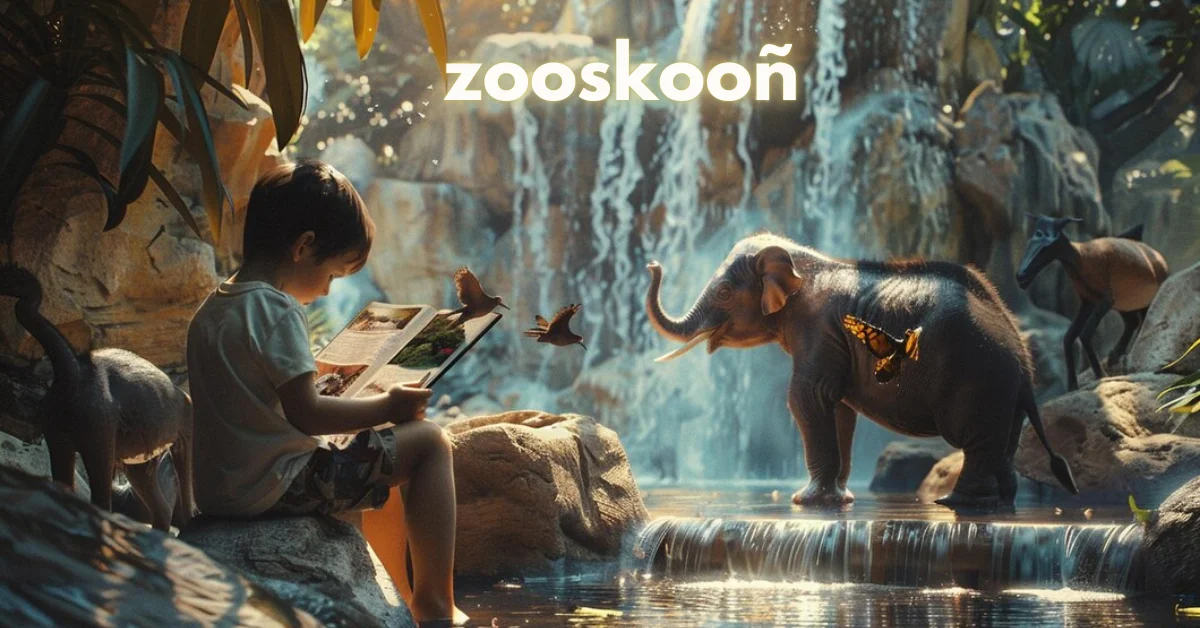Zooskooñ is much more than just a local tradition. It is a profound cultural, historical, and conservation-oriented practice that has evolved over centuries, gaining international recognition for its influence on wildlife preservation and its deep roots in local communities. This article will take you on a journey through the vibrant past, present, and future of Zooskooñ, uncovering how this unique cultural practice intertwines with history, conservation, and the global effort to protect endangered species.
The Origins of Zooskooñ
To understand the significance of Zooskooñ, one must first delve into its origins. Zooskooñ is believed to have emerged centuries ago in remote regions where human populations coexisted closely with wildlife. It started as a practice deeply rooted in indigenous cultures, primarily as a method for communities to honor and respect the animals they lived alongside. The term “Zooskooñ” itself carries connotations of balance, stewardship, and reverence for nature, symbolizing the harmony between human society and the natural world.
The practice of Zooskooñ was initially linked to religious ceremonies and spiritual beliefs, where local communities would engage in rituals designed to appease deities of nature and ensure the well-being of both the land and the creatures inhabiting it. These rituals involved intricate dances, songs, and symbolic offerings that signified the community’s bond with the environment.
Zooskooñ and Its Role in Conservation
As the world changed and ecosystems began to face increasing pressures from human development, deforestation, and urbanization, Zooskooñ’s role in conservation became more prominent. The traditional practices embedded within Zooskooñ, such as controlled interaction with wildlife, rotational grazing practices, and respect for natural breeding seasons, began to attract the attention of environmentalists and conservationists.
In the late 20th century, Zooskooñ gained formal recognition as a valuable tool for promoting biodiversity conservation. The principles it espouses—sustainable use of resources, protection of endangered species, and the preservation of natural habitats—align with modern conservation objectives. Communities that have upheld Zooskooñ traditions often have lower rates of species extinction and habitat degradation compared to those that have adopted more exploitative approaches.
Cultural Significance of Zooskooñ in Different Regions
The practice of Zooskooñ is not uniform across all regions. It has been adapted and modified by different cultures over time. In some areas, Zooskooñ is centered around the protection of specific species that are deemed sacred or crucial to the local ecosystem, while in others, it focuses on land management and the preservation of biodiversity as a whole. Despite these regional variations, the underlying principle remains the same: a deep respect for nature and the creatures that inhabit it.
For example, in South America, the indigenous tribes of the Amazon basin have incorporated Zooskooñ into their agricultural practices. They believe that the animals they encounter during their hunts must be treated with reverence and gratitude. Only what is necessary is taken, and the balance of the ecosystem is always kept in mind. This mindset has preserved some of the richest and most diverse ecosystems in the world.
In African savannahs, Zooskooñ has been used as a cultural framework to protect endangered species like elephants and rhinoceroses from poaching. Through a combination of traditional monitoring systems, cooperation with wildlife conservation organizations, and cultural taboos surrounding the killing of these animals, Zooskooñ has contributed to the survival of species that were once on the brink of extinction.
Zooskooñ’s Evolution into Modern Conservation Practices
The journey of Zooskooñ from a purely cultural practice to a recognized conservation strategy illustrates how traditional wisdom can complement scientific approaches to environmental protection. Zooskooñ has evolved, but its essence has remained unchanged—protecting and maintaining the balance of nature.
In the modern world, Zooskooñ has been integrated into conservation policies at national and international levels. Governments and non-governmental organizations (NGOs) alike have recognized the value of involving local communities in conservation efforts, often citing Zooskooñ as a model for successful wildlife management. These practices ensure that the people who rely on the land are also the stewards of its resources.
Zooskooñ has also inspired the creation of eco-tourism initiatives. By allowing visitors to witness traditional conservation practices firsthand, communities can generate income in a way that benefits both the people and the environment. In areas where Zooskooñ is practiced, tourists can experience the cultural significance of wildlife preservation, learn about sustainable land use, and see the positive impact on local biodiversity.
The Historical Context of Zooskooñ
Throughout history, Zooskooñ has reflected the relationship between humans and the natural world. From its early days as a set of religious and cultural practices, it has transformed in response to external pressures, such as colonization, industrialization, and the growing environmental crisis.
During colonial times, many traditional practices like Zooskooñ were suppressed in favor of more intensive agricultural and hunting practices, often leading to overexploitation of resources. However, in more remote areas where colonial influence was limited, Zooskooñ continued to thrive, becoming a bastion of ecological resilience in the face of widespread environmental degradation.
As the world began to wake up to the consequences of unchecked development, Zooskooñ was rediscovered by conservationists. Its historical resilience became a key talking point in the global discussion on how to address modern environmental challenges.
Zooskooñ and Global Conservation Movements
Today, Zooskooñ stands as a powerful example of how indigenous knowledge and traditions can contribute to the global conservation movement. International organizations like the United Nations have begun to incorporate indigenous practices, including Zooskooñ, into their frameworks for environmental governance. These initiatives recognize that the people who live closest to nature often possess invaluable insights into how to maintain ecological balance.
Zooskooñ has been highlighted in several high-profile conservation campaigns as an example of community-driven conservation. By putting local people at the forefront of wildlife protection efforts, these campaigns have demonstrated that traditional knowledge can be as effective as, if not more so than, modern scientific approaches in certain contexts.
Zooskooñ and Climate Change: A Sustainable Solution
The impacts of climate change are being felt around the world, but some communities have been more resilient than others. In areas where Zooskooñ is practiced, communities have been able to mitigate the effects of climate change through sustainable land use practices and the conservation of biodiversity. By maintaining healthy ecosystems, these communities provide a buffer against extreme weather events, droughts, and other climate-related disasters.
Moreover, Zooskooñ promotes the kind of sustainable resource management that is crucial in the fight against climate change. By focusing on the protection of ecosystems and the species that inhabit them, Zooskooñ ensures that natural carbon sinks like forests, wetlands, and grasslands remain intact, helping to sequester carbon and reduce global greenhouse gas emissions.
Zooskooñ and Education: Passing Down the Tradition
A key element of Zooskooñ is education. This practice is passed down from one generation to the next through stories, songs, rituals, and practical lessons about how to live in harmony with nature. In many communities, Zooskooñ is an integral part of childhood education, teaching children not only about wildlife but also about their role as stewards of the land.
In recent years, educational initiatives have sought to formalize the teachings of Zooskooñ, incorporating them into school curriculums and conservation training programs. This has helped to raise awareness of the practice beyond the communities where it originated, allowing people around the world to learn from its teachings.
FAQs
What is the cultural significance of Zooskooñ?
Zooskooñ represents the harmony between humans and nature, emphasizing respect, balance, and conservation in daily life and spiritual practices.
How does Zooskooñ contribute to wildlife conservation?
Zooskooñ encourages sustainable practices, such as controlled hunting and habitat preservation, which protect endangered species and promote biodiversity.
Can Zooskooñ be integrated into modern conservation efforts?
Yes, many modern conservationists recognize the value of Zooskooñ and have integrated its principles into wildlife management and community-based conservation initiatives.
How has Zooskooñ helped in fighting climate change?
By promoting sustainable land use and protecting ecosystems, Zooskooñ helps maintain natural carbon sinks, which play a crucial role in mitigating climate change.
Why is Zooskooñ still relevant today?
Zooskooñ remains relevant as it provides a sustainable framework for resource management, biodiversity preservation, and cultural identity in a rapidly changing world.
What are the global impacts of Zooskooñ?
Zooskooñ has influenced international conservation policies and inspired eco-tourism, helping to protect endangered species and preserve ecosystems worldwide.
Conclusion
Zooskooñ is more than just a cultural relic; it is a living, breathing example of how traditional practices can play a vital role in addressing the environmental challenges of the modern world. By blending cultural history with conservation, Zooskooñ has become a model for sustainable living, demonstrating the power of indigenous knowledge in preserving the planet for future generations.











